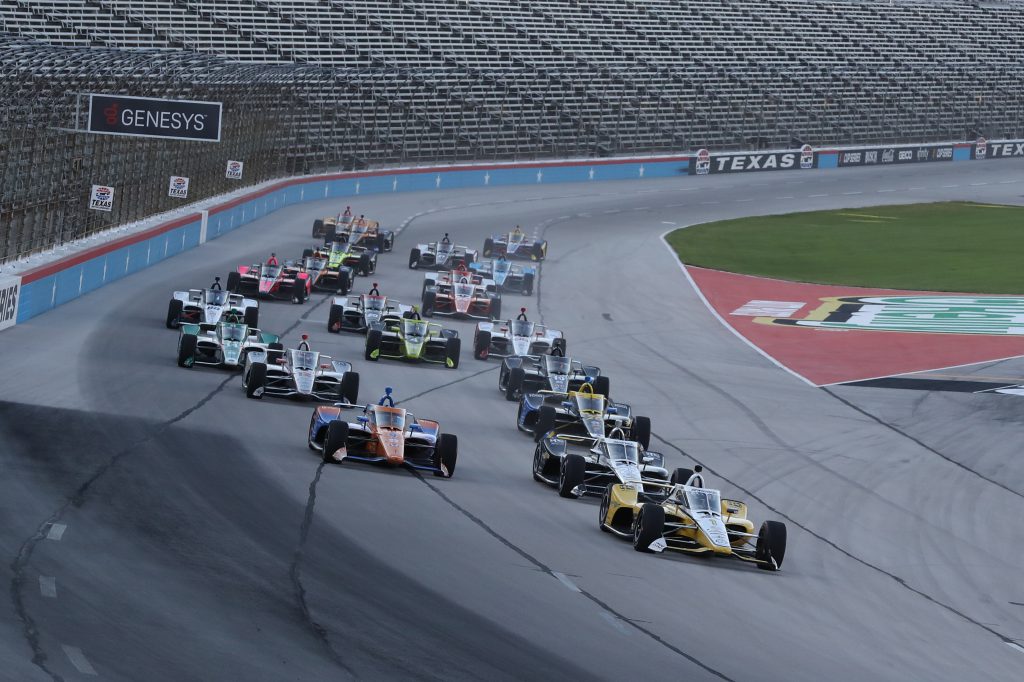34,000 pounds, or 15.1 tonnes if you’re on one side of the Atlantic. That’s as much as Two F16 fighter jets. Or two Tyrannosaurus rex. Or 1000 gold bars. Or 22 Indycars. That’s how much load the new IndyCar aeroscreen device can withstand, according to the series.
But – despite the image of two short-armed T-Rexs sitting atop an Indycar – this is no laughing matter. Designed by Red Bull Advanced Technologies and produced by PPG, the 3-D printed aeroscreen has been installed to save lives.
It was considered by Formula 1 before it chose the halo device. The halo caused uproar in fundamentalist circles as fans complained the aesthetics of the single-seater were being ruined by this device which had the cheek, the bare-faced effrontery, to try and save lives.
You can imagine what those fans thought of the aeroscreen, an even more visually impactful device…
After tests at Indianapolis, Circuit of the Americas, Sebring, Texas and Richmond, the aeroscreen finally made its debut on Saturday in the IndyCar season-opener in Fort Worth.
The device has caused more than a headache for teams, drivers and engineers as it adds about 20kg to the centre of the car, causing a number of issues not limited to higher load on the tyres due to the added weight, causing more thermal and/or surface degradation; weight distribution affecting the handling of the car, and the device creating its own aerodynamic load.
IndyCar did well to cram in 2082 miles of testing before the season started, but as you can expect it wasn’t trouble-free. It has encountered a range of problems including giving Penske’s Will Power a soggy lap when his device leaked, although that was an “easy fix”.
The ballistic canopy is made of five pieces of 3D-printed Titanium and has a de-mister plus up to eight tear-offs, but visibility has still been an issue. Especially with glare and setting sun.
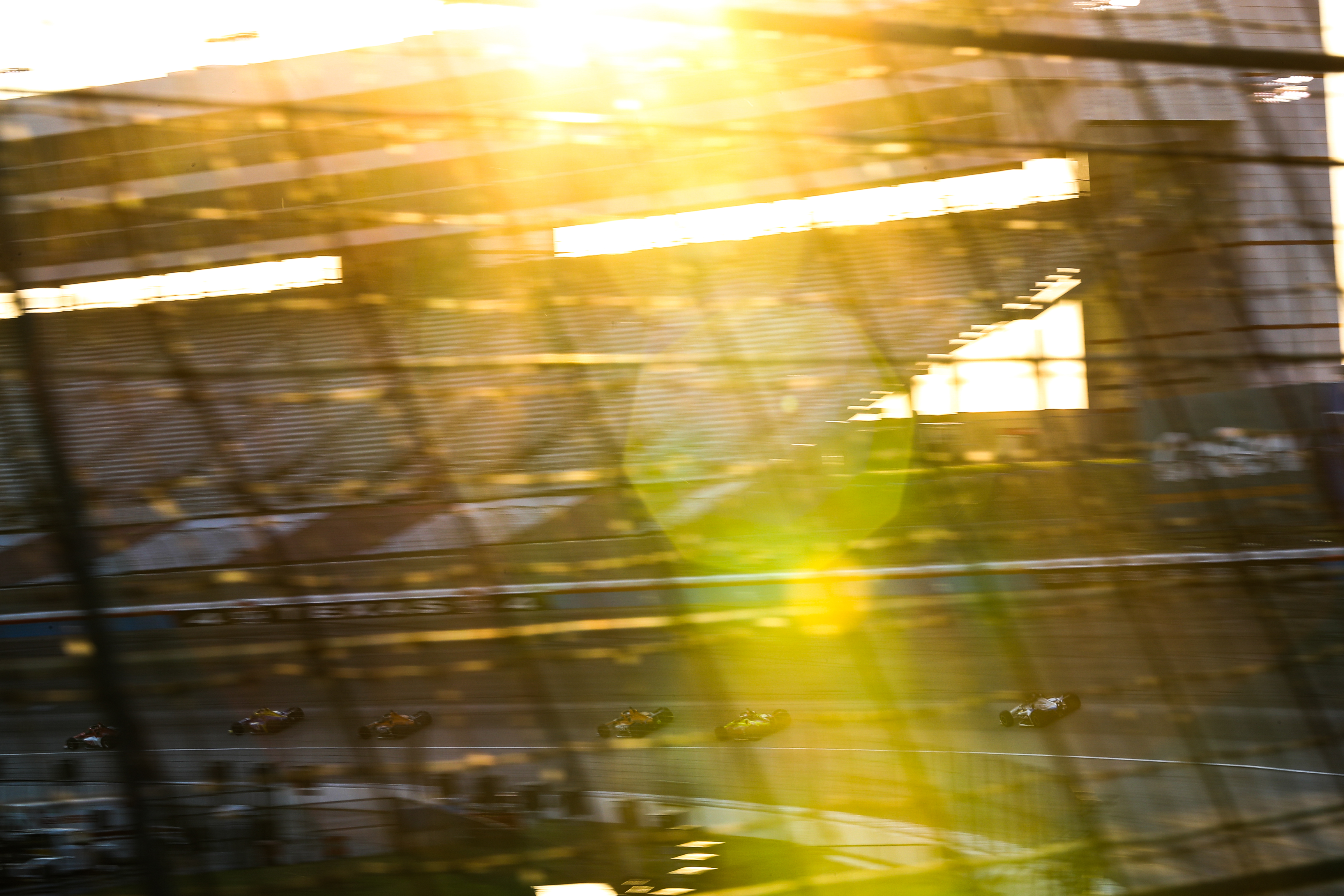
Cooling has also been a worry as air that would previously pass over and into the cockpit of the driver is now fired over the car creating a sort of cockpit cocoon, putting cold air to chill the driver at a premium.
However, despite teething issues – which are a prerequisite of the introduction of a pioneering device like this – no driver has chastised its introduction.
Hopefully, all of them accept that IndyCar – perhaps more so than F1 or other single-seater categories because of the opportunity for high-speed airborne crashes on ovals – needed this device.
Some did question the aesthetics, even in the build-up to last weekend’s Texas race. Carlin’s Conor Daly said: “I think publicly I’ve said I’m not a huge fan of it. But I understand the reasons obviously why it’s been introduced. I respect what the series wants to do, the direction they’re taking obviously.
“The handling is different in the car, but as far as the driver’s experience, I don’t even know the thing anymore” :: Josef Newgarden
“But, yeah, it obviously presents a lot of interesting variables.”
Those variables for Texas were just a small part of IndyCar’s effort to get back on track following a delayed season which should have started with St Pete in March and five road-course races following.
That spell without races not only curtailed the season but affected teams and suppliers’ ability to get into their workshops and complete their tasks.
Firestone – the series’ tyre supplier – had intended to bring a new tyre to the event to combat that added weight of the aeroscreen and the anticipated high temperatures of Texas.
But the COVID-19 pandemic meant it was unable to develop, test, and introduce that tyre in time. Instead, it brought the unused right-hand sides trialled for last year’s event, and the left-hand side compound hailed from the Indianapolis 500.
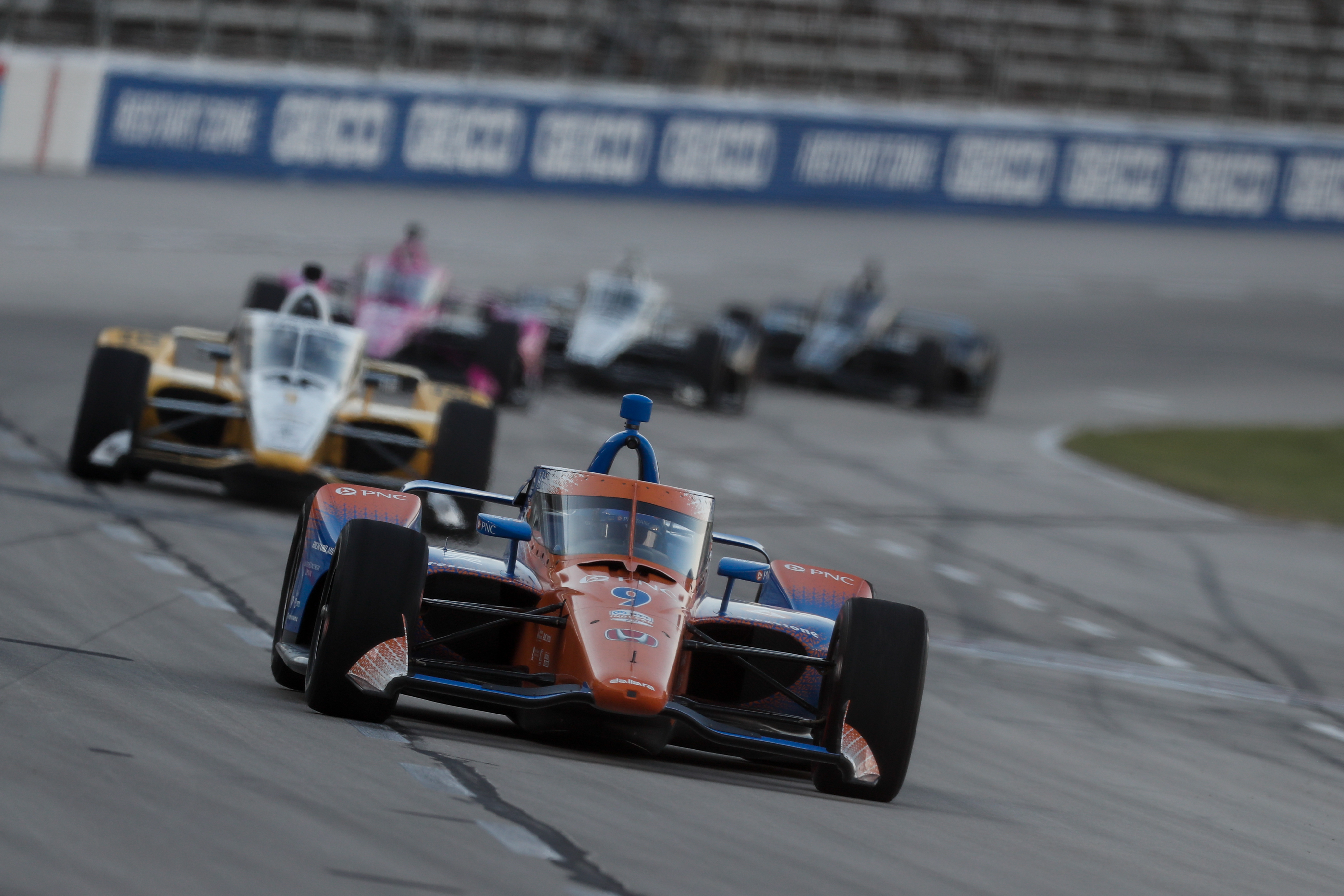
It was a hodge-podge at best, but despite the grumblings of the unpredictability it would cause, the drivers rightfully thanked Firestone in trying circumstances in the build-up to the event for producing a tyre safe enough to race on. That could have been another thing to delay IndyCar’s season had a solution not been found.
To combat the potential issue with the tyres, IndyCar mandated a maximum stint of 35 laps on one set of rubber, but race winner Scott Dixon said that proved unnecessary in the end because there was no problem!
He said: “Got to give a big shout out to Firestone.
“I know everybody was a little bit worried coming here on a tire that was a bit unknown.
“The thing was fantastic.
“I think we could have gone 65 laps. They just kept on producing. I could still at the end of a stint run 210s, 211s. Thanks to them. Obviously, it’s been a strange situation for them coming back to Texas, the way we all have.”
When cars did finally get out on track for a race weekend – now race day with the schedule crammed into Saturday to help prevent the transmission of COVID-19 – for the first time since September last year, the aeroscreen did have an effect.
But it was mainly due to the fact that teams only had a two-hour practice – an hour and a half for non-rookies – to get the car set-up and performing well. That doesn’t allow much trial and error time.
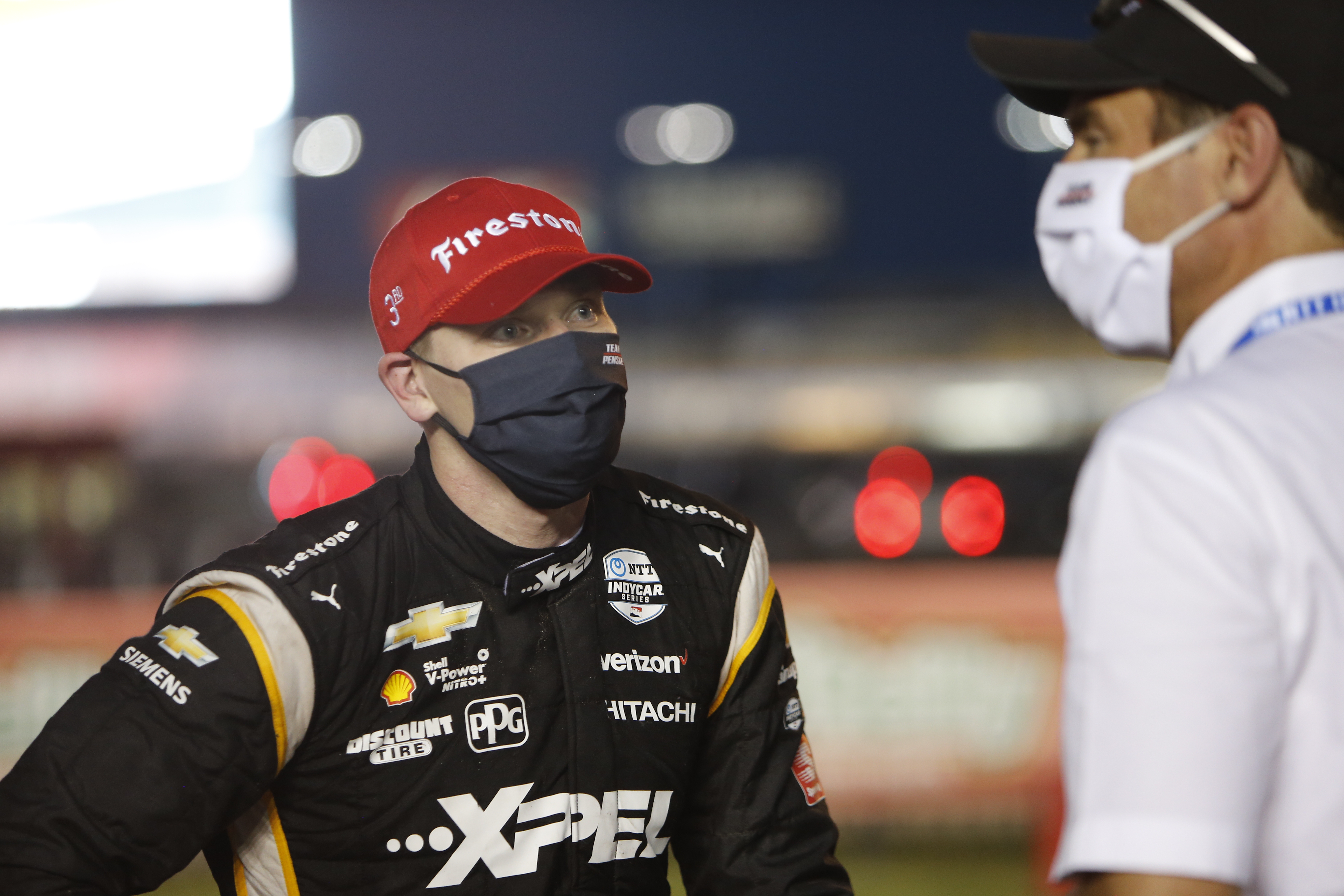
As for the pre-race worries about visibility, cooling, and how the device would work in wheel-to-wheel combat, the reigning champion and last year’s Texas winner Josef Newgarden gave the device its best possible compliment when asked about how it performed by The Race.
“Other than the handling differences, I didn’t notice the screen, to be quite honest with you. You can take that as a very good thing. I didn’t notice it,” he said, having finished third in Saturday’s race.
“It’s there now. I mean, it felt like a normal Indycar in the race to me. I didn’t notice a big difference to last year.
“The handling is different in the car, but as far as the driver’s experience, I don’t even know the thing anymore. It’s crazy how good of a job they’ve done with the ducting.
“The visibility was fine. I had zero issues with it from that standpoint.”
What we shouldn’t forget is, even if this device prevents one minor injury, or even directly saves a driver’s life like the halo has done on multiple occasions, that will be far more important than how it looks
Also asked by The Race, Texas runner up, 2016 IndyCar champion and reigning Indy 500 winner Simon Pagenaud added: “The car changed dramatically. We’re going to have to adjust.
“Obviously today one day wasn’t very easy to do that. It was good to have a whole race and be able to figure out what we need to do for the future going forward.
“But, same as Josef, you just feel it’s safe.
“You feel like if anything happens, your face is protected. That’s awesome. That’s awesome to see that IndyCar has made such a leap forward in safety. Personally, I’m very thankful that we’re in that era with Josef and the others.
“Obviously, safety is big. We go very high speeds. Things can get safer, it’s pretty awesome. That is a big positive.”
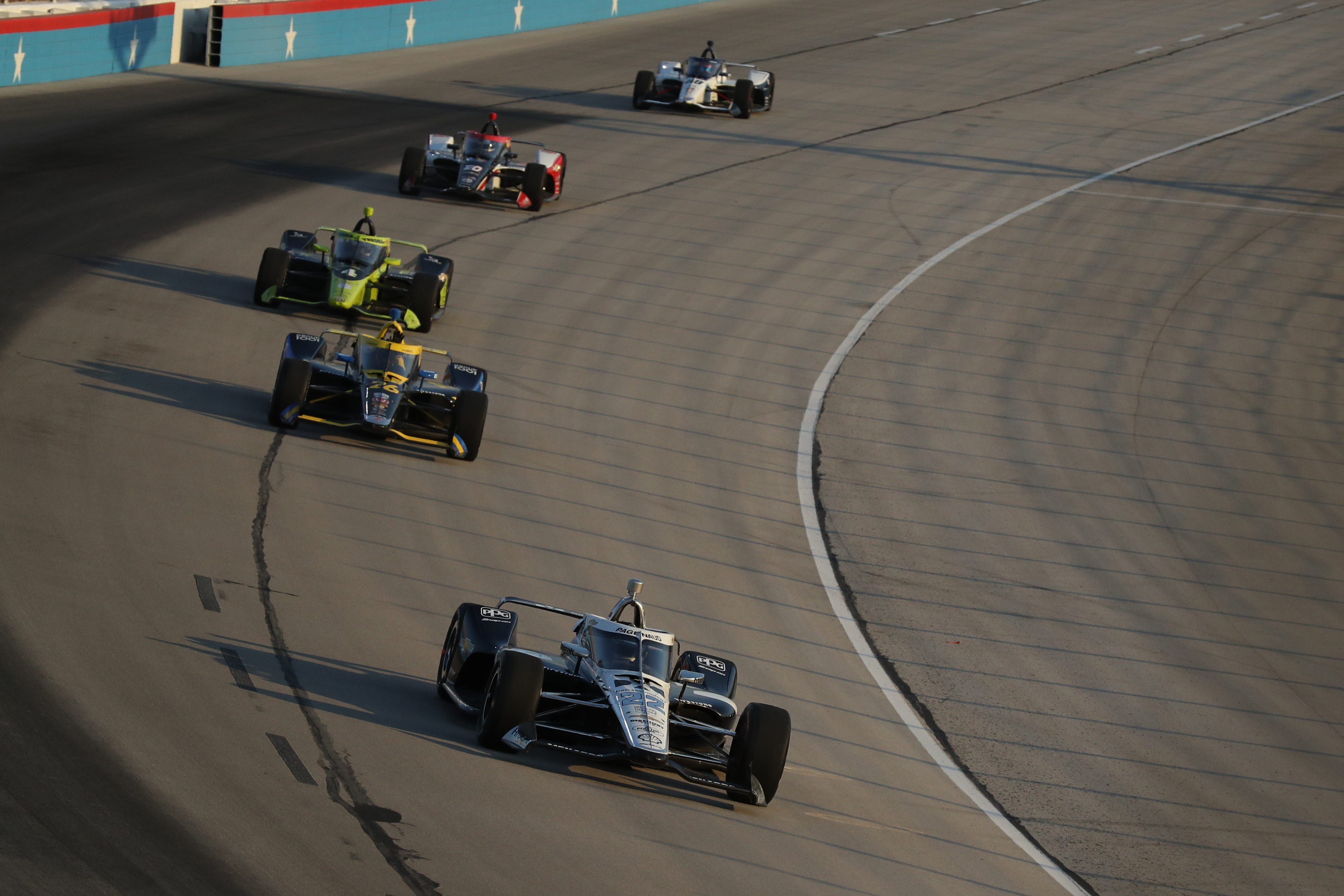
In IndyCar – especially at places like Texas – the speed involved means big accidents can happen, the aeroscreen is definitely worth the tradeoff of a bulky windscreen.
Sure – it’s not a very fundamentalist single-seater and it does look ungainly. But like F1, fans will learn to adapt to its looks and soon it will just be part of the furniture. Many F1 fans think cars before the halo now look weird, like they are missing something.
And from a positive perspective, both devices have offered some truly breathtaking camera angles both facing to and away from the driver, and the chance to add new graphics to the experience. In that sense, it’s a win-win.
There’s no doubt the device caused teams a lot of problems as set-ups from last year are now not as refined as they once were due to the aeroscreen’s effect on the weight – and in turn the tyres.
But also, the short time between practice, qualifying and the race only served to heighten that issue making it much worse, as teams didn’t have as much time to test and analyse data to perfect their set-ups.
“I think at least from our side it was a little bit of everything,” said Newgarden when asked if the aeroscreen had caused the set-up issues which marred his race.
“Limited track time obviously with practice. Felt like we got a certain read on where we were. But you’re seeing a very large mechanical shift with the car, high CG, high weight, dramatically different weight distribution. With that, I think you get tyre temperature shifts by yourself and in traffic.
“It’s really about how you’re working the tires. I think that’s where we struggled personally on the #1 car tonight. We were not in the right operating range. I struggled with tires mightily right from the beginning of each stint. That’s all part of the game.
“It’s new with this aeroscreen. We took a little bit of a guess on our car. It didn’t come out as a winning guess. It at least gives us a direction.
“We’re going to work with it and figure out what’s best for it.”
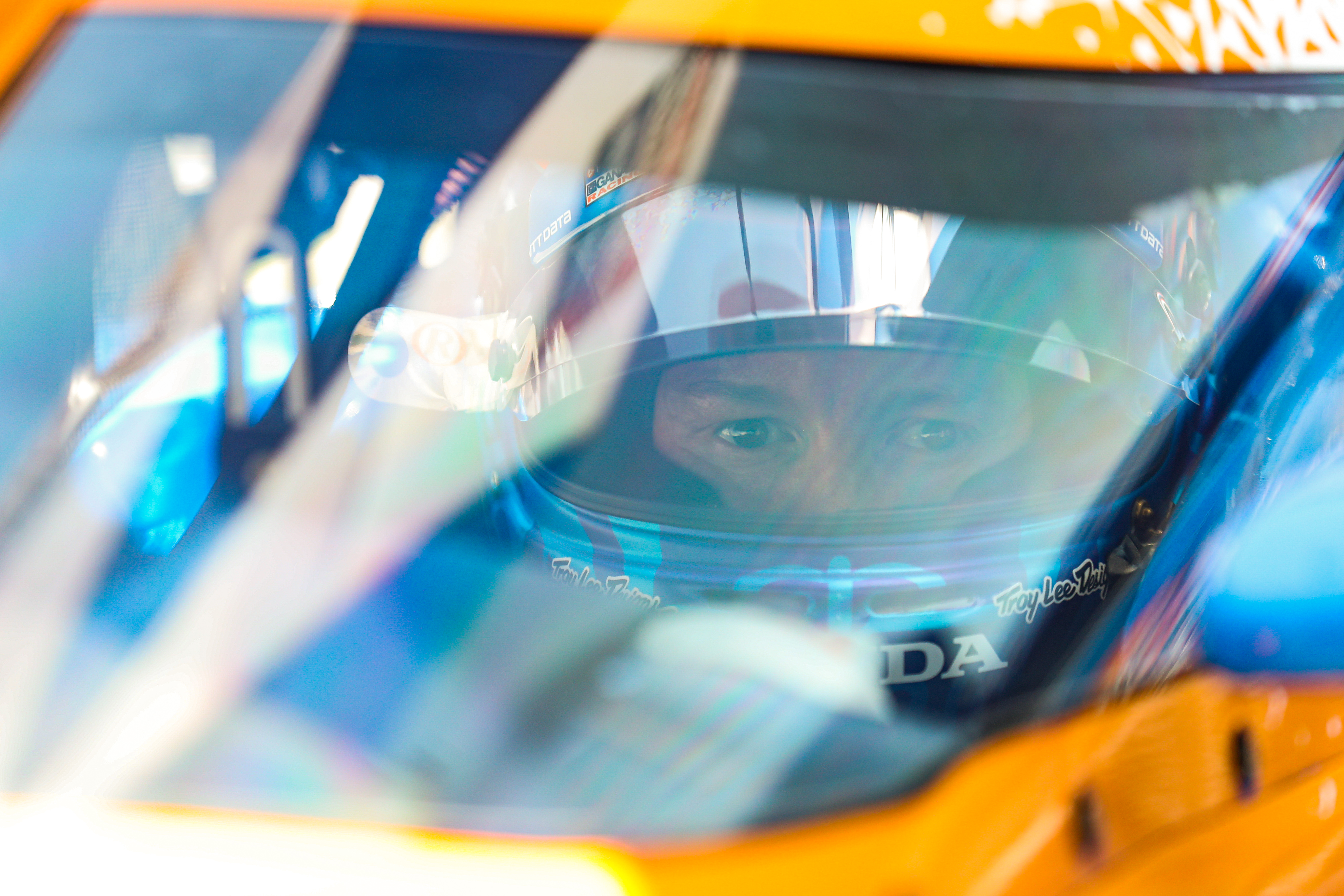
Pagenaud added: “On our #22 car, we took a different approach. We decided to restart with what we had last year because there were too many unknowns. Just like Josef explains, the car has changed a lot technically. The tyres obviously seeing a very different effort, I would say. Obviously, the degradation factor was different than what we expected.
“When you only have an hour and a half of testing, you only have time for three changes, quick fix, but it’s not like you can reinvent the wheel and go into qualifying and race with something you haven’t even tested on track.
“It was pretty much a day today where you had to unload good to win the race I think. I think we were okay on the 22 car. I think we were actually getting pretty good at the end. Yeah, just ran a bit out of time I think. But overall I think we maximised what we had.”
While the aeroscreen might be new, the result on the racing didn’t change much in terms of results. When Scott Dixon is on, he’s the best driver in IndyCar and when the car is right, he wins.
And even with a day where they struggled mightily, Pagenaud and Newgarden were second and third, showing why the Penske duo fight for titles every year. They topped the standings for average finish on ovals last year, and with a higher proportion of ovals to road and street courses on IndyCar’s coronavirus-affected calendar in 2020, that bodes well for the pair.
As for the aeroscreen, I’ve already started analysing what the Texas result tells us about the rest of the season, and forgotten the aeroscreen exists in a sporting and visual capacity. Everybody else should do the same!
What we shouldn’t forget is, even if this device prevents one minor injury, or even directly saves a driver’s life like the halo has done on multiple occasions, that will be far more important than how it looks.
If the coronavirus has taught us anything, it’s that human life is far more important than a sport and its minor issues like how a windscreen affects handling.



